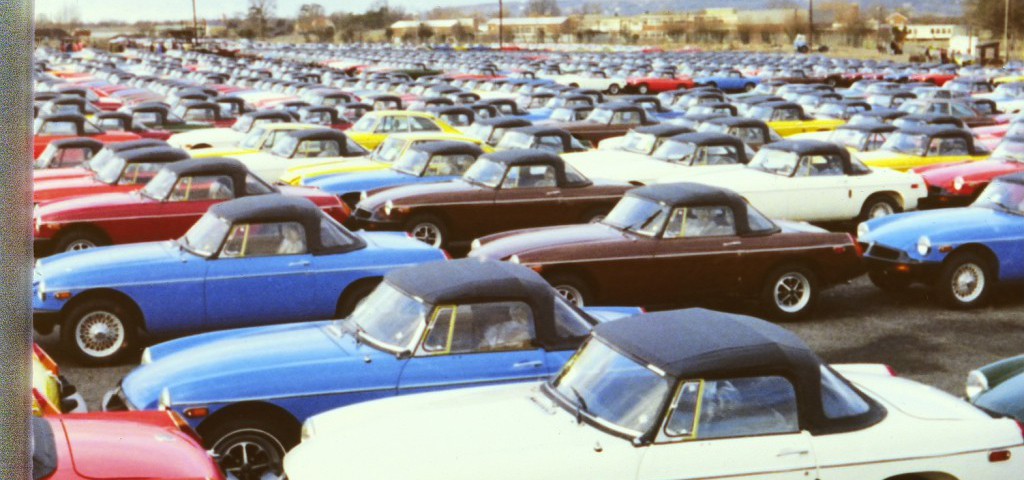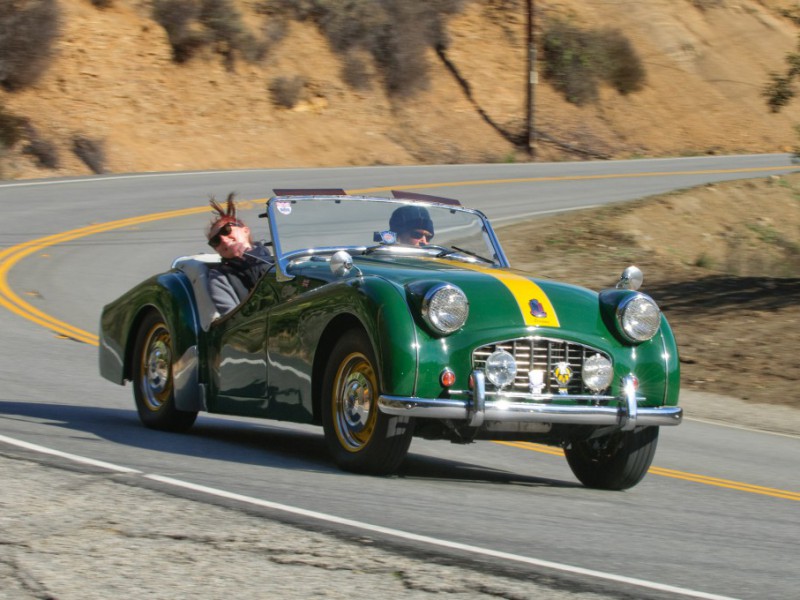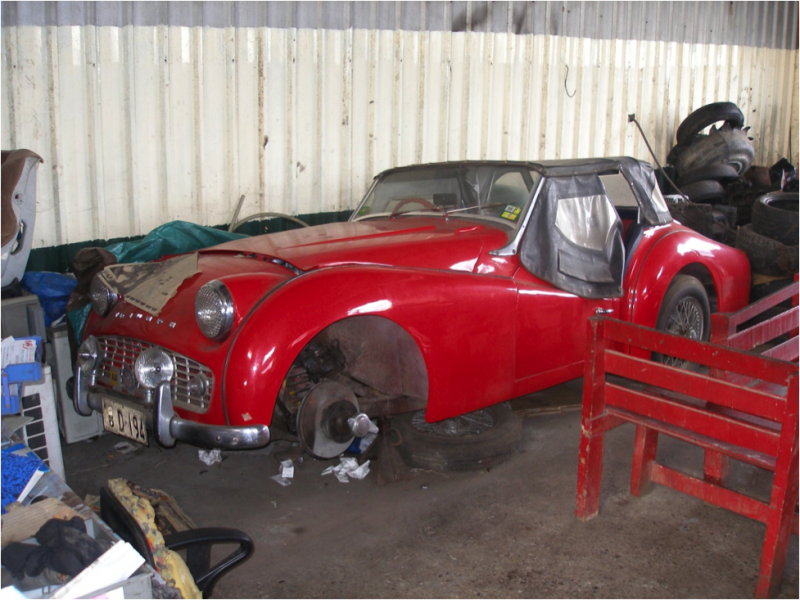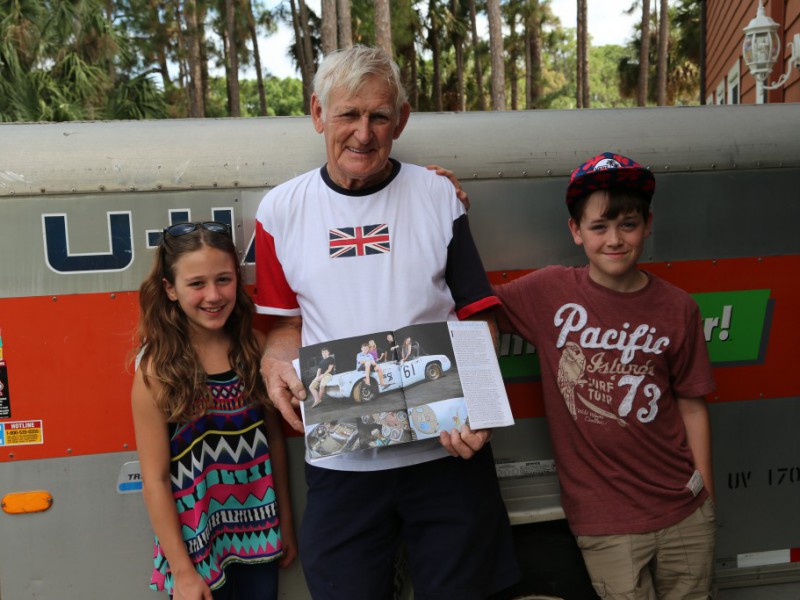I have insider information about the first days of some of these cars and it isn’t all pretty. Don’t get me wrong, I love British cars. I go to all the car shows I can within a 100-mile radius of Columbus, Ohio. To pay for college in the early 1970s, I worked as a lot boy at Felmer Imports, a small dealership in Waterloo, Iowa. My job was to prepare the new cars that came in.
MGs arrived on small transports. All bright work was covered in what I can only describe as “white athletic tape.” The tops were covered with a heavy, clear plastic and then the entire car was sprayed with a brownish protectorate that resembled shellac. All this care protected the cars during overseas shipment, but demanded a lot of prep work.
First thing I would do was hot pressure wash off what grime I could. Usually the water just rolled off the car like it was a duck’s back. Next I would spray the car with a solvent solution—something like paint thinner, letting this soak in overnight. We experimented with different solvents until we found one that took off the shellac but didn’t eat the paint. I’m sure every dealer had a similar experience. The solution would lift the top layer of tape off the bright work, but would leave a nasty, sticky residue that could only be removed with lacquer thinner and 0000 steel wool (yes, I had to be very careful not to splash it on the paint). The entire car could now be rubbed down with a wool wash mitt, commercial detergent, steaming hot water and a lot of rubbing. Once all this was complete, I could remove the plastic from the top, power-buff the paint with fine-cut rubbing compound, then two coats of wax.
When the outside was complete, I would attack the interior. All carpeting was in a plastic bag in the boot. This was an easy install and took a matter of minutes. No MG came with a radio or antenna. These and luggage racks were dealer add-ons. So if you ever wondered why your radio antenna is in one place on your car and another on your friend’s, blame the set-up guy. And if your luggage rack is centered perfect, you got to give him credit.
Belcamp, Maryland, was the Point of Entrance for all our British Leyland products. Interestingly, the Jaguars did not have all the protective stuff, while the MGs and Triumphs did. When I asked the Port Authority Dock Supervisor, who was as friendly as a junkyard dog, why the difference? I was informed Jags traveled below deck while the trash (his words) sat on deck exposed to the saltwater.
There was little, if any, support from England and we were constantly frustrated with parts replacement. It mattered little to British Leyland what the calendar year was: if the car came down the assembly line and a two-year-old part was found under the work bench and would fit, it was installed. We had a model year 1972 car with 1970 parts on it and right next to it would be an identical car with current, totally different parts on it. Strange thing was, they all worked. We even got MGs in with four different manufacturers’ tires and some with only the spare rim—no tire (guess they ran out that day).
When I talk to the owners of MGs and relate some of these stories to them, you should see their eyes light up with a “Eureka!” expression. For example, the interior panels were stuffed into plastic bags and then installed onto the car. That left the prep guys with a few options:
1) Remove all panels and then the bags, or 2) Use a razor blade and cut the bags off by prying the panels away from the body or 3) Out of frustration—pulling at the plastic until it stretched beyond its tensile strength and snapped, hoping that you were then able to stuff the plastic membrane behind the panel. Some owners have wondered for years why they found small razor cuts in their door panels, plastic membranes stuck behind panels and brown gooey “stuff” in the corners of hard to reach places.
Altogether, an entire set-up for an MG took about 8 hours.
By Scott Bartels









'Your MG Started with Me' have 2 comments
January 2, 2016 @ 12:34 pm Bill
Back in the 60’s I purchased a MG B (1600 cc) with a LeMans fiberglass body. It had been modified by an air line pilot for sport racing in the Bahamas. With a cross flow head and a cam by Iscaderian. Very hot 120 mph. Very thirsty too.
Has anyone ever heard of this model elsewhere?
June 28, 2019 @ 3:43 am J.w.l
Sid Enever was a very nice man.I lived on the outskirts of oxford when I as a teenager and JANE one of his daughters was one my girlfriends.Sadly she is dead now but we had some great times together. She was a close friend of my wife Diana,whose father was also a senior manager at Morris Motorsin Crowley at Oxford..Sid always of course drove an M.G usually a top of the range Magnette